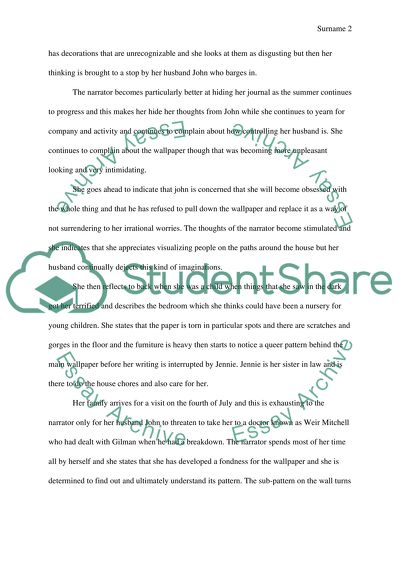Cite this document
(“Paper: Charlotte Perkins Gilman v. David Foster Wallace. Compare and Essay - 1”, n.d.)
Paper: Charlotte Perkins Gilman v. David Foster Wallace. Compare and Essay - 1. Retrieved from https://studentshare.org/english/1627272-paper-charlotte-perkins-gilman-v-david-foster-wallace-compare-and-contrast-the-yellow-wallpaper-with-the-depressed-person
Paper: Charlotte Perkins Gilman v. David Foster Wallace. Compare and Essay - 1. Retrieved from https://studentshare.org/english/1627272-paper-charlotte-perkins-gilman-v-david-foster-wallace-compare-and-contrast-the-yellow-wallpaper-with-the-depressed-person
(Paper: Charlotte Perkins Gilman V. David Foster Wallace. Compare and Essay - 1)
Paper: Charlotte Perkins Gilman V. David Foster Wallace. Compare and Essay - 1. https://studentshare.org/english/1627272-paper-charlotte-perkins-gilman-v-david-foster-wallace-compare-and-contrast-the-yellow-wallpaper-with-the-depressed-person.
Paper: Charlotte Perkins Gilman V. David Foster Wallace. Compare and Essay - 1. https://studentshare.org/english/1627272-paper-charlotte-perkins-gilman-v-david-foster-wallace-compare-and-contrast-the-yellow-wallpaper-with-the-depressed-person.
“Paper: Charlotte Perkins Gilman V. David Foster Wallace. Compare and Essay - 1”, n.d. https://studentshare.org/english/1627272-paper-charlotte-perkins-gilman-v-david-foster-wallace-compare-and-contrast-the-yellow-wallpaper-with-the-depressed-person.


